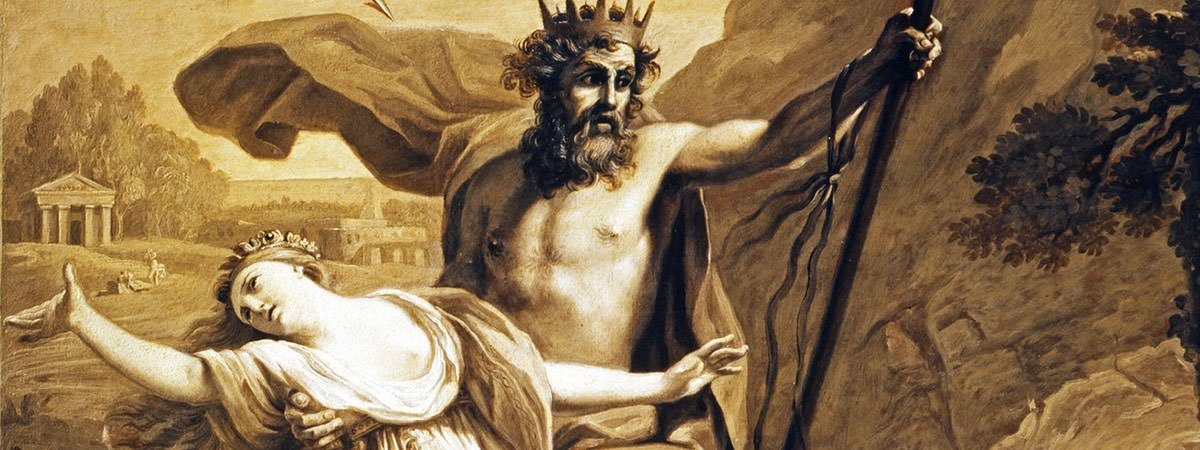In ancient Greek mythology, Hades was the first born son of the legendary Titans and supreme deities Cronus and Rhea. After defeating their own father, Hades along with his siblings Zeus and Poseidon, claimed ruler-ship over the cosmos. The brothers then divided the territory among themselves with Hades receiving the Underworld (a place where dead souls go after death), Zeus the Sky, and Poseidon the Sea. Hades was thus among the most prominent of Olympians as the King of the Underworld and the God of the Dead. Hades presided over funeral rites and defended the right of the dead to due burial. The realm of Hades was guarded by the three headed dog Cerberus while the God was attended by a large court which included: the Erinyes (Furies), the Moirai (Fates), the Keres (Death-Daimones), Thanatos (Death); and the Gods of the 5 rivers that flowed through the Underworld: Acheron (the river of sorrow), Phlegethon (fire), Lethe (forgetfulness), Cocytus (lamentation) and Styx (hate). In his realm, Hades ruled with full authority along with his queen Persephone, daughter of Zeus. Hades was also considered as the God of wealth associated with the mining of gold, silver and the fertility of soil. In Greek myths and art he is generally portrayed as grim, cold and stern; with a solemn, mournful look. The Roman Gods Dis Pater and Orcus were later taken as equivalent to Hades and merged into the God Pluto, a Latinization of the Greek Plouton, a euphemistic title often given to Hades. Know more of the Greek God of the Dead with these 10 most famous myths featuring Hades.
#1 Cronus And The Rebirth of the Olympians
In Greek mythology, Cronus (Saturn) was the youngest of the first Generation of Titans, who became the supreme deity of Greek pantheon after dethroning his divine father Ouronos (Uranus). Cursed by his father to meet the same fate at the hands of his progeny, Cronus decided to devour each of his newly born children. Cronus and his wife Rhea went on to give birth to 6 children. Hades was their first born son who along with his 3 elder sisters (Hestia, Demeter and Hera) and younger brother (Poseidon) were consumed at birth by their father. However Zeus, the youngest of them was saved by Rhea and was secretly kept hidden in the island of Crete, away from his father’s eyes. Zeus soon grew up and was now determined to restore his brothers and sisters to the light of day. With the help of Metis (Goddess of wisdom, thought and skill), he made his father consume a spurious drink which made Cronus queasy, forcing him to emit out the children that he had swallowed. This was the rebirth of the 5 to be Olympians from the stomach of their father, now reborn in the reverse order – Poseidon, Hades, Hera, Demeter and Hestia.
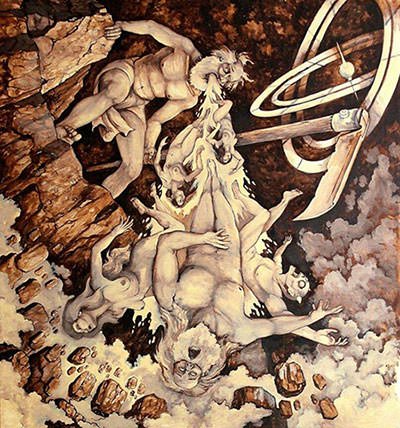
#2 Division of the Cosmos
Cronus had consumed all his children apart from Zeus, his youngest child who would grow up and rescue his siblings from his father’s stomach. When all of Zeus’s brothers and sisters were freed, he gathered them and convinced them to start a rebellion against their father. Thus started the 10 year war between the Titans and the Olympians called the Titanomachy, which led to establishment of the Olympians as the new Gods of the Greek mythology. At the end of the war, Zeus, along with his brothers Poseidon and Hades, divided the universe by drawing straws; Zeus won and became the king of the sky, as well as the ruler of mortals and gods; Poseidon became the ruler of the seas; while Hades, who drew the shortest straw, became the Ruler of the Underworld. The Earth and Mount Olympus was however the common domain of all the three Gods.
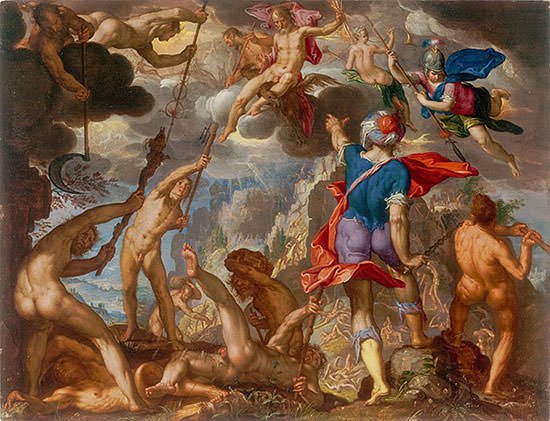
#3 Abduction of Persephone
Persephone was the only daughter of the Goddess Demeter from the chief Olympian God Zeus. Persephone grew up to be a beautiful young girl attracting the attention of several Olympian Gods including Apollo, Ares, Hephaestus and Hermes. However, being a mother’s child, Persephone rejected the advances of all her suitors and instead spent much of her time interacting with and tending to nature. Hades was Persephone’s uncle and the brother of Demeter, who had been given dominion over the Underworld after the Olympians overthrew the Titans. In certain myths, Hades was looking for a worthy consort and complained to Zeus regarding the same, and the later suggested Persephone as an ideal candidate. Other myths simply point to Hades setting his eyes upon the Goddess. All the same, Hades decided on abducting Persephone for himself. One day, as Persephone was gathering flowers in the Nysian meadow along with her attending nymphs, she wandered apart from the group attracted by a glorious fragrant flower in full bloom. As the Goddess reached to pluck it, the ground below her feet opened up and Hades appeared before her on his golden chariot. He consequently kidnapped her and took her to his realm of the Underworld, to be his queen and wife.
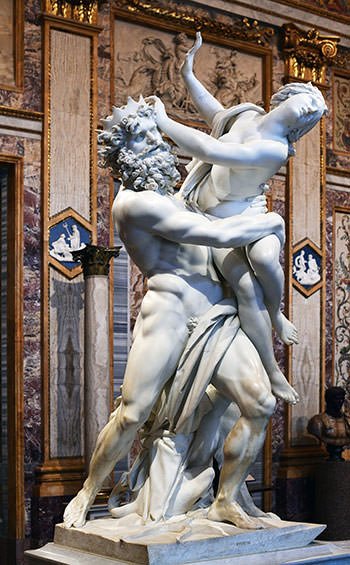
#4 Hades Deceives Persephone
When Persephone was abducted by Hades, her mother Demeter (Goddess of fertility and agriculture) became distraught and began frantically searching for her daughter. This led the Goddess to ignore her duties causing great famines upon earth which consequently brought about death and destruction. Looking at the grim situation, Zeus had no option but to intervene in the matter. He thus asked his herald Hermes to travel to the Underworld and command Hades to return Persephone to her mother. The king of the Underworld, Hades was wise enough not to completely discard Zeus’s wish and yet he wanted Persephone for himself. So he played a trick, and convinced his reluctant bride Persephone to eat a few seeds of the pomegranate fruit, before letting her go. This consumption of food in the Underworld acted as a binding contract to that realm and Hades knew that Persephone could never be completely free. It was thus finally agreed on that Persephone would spend eight months of the year with her mother on Olympus and the remaining four months with Hades as the queen of the Underworld. The myth personified and explained the seasons of the year and the fertility of the land. The period that Persephone spent in the Underworld coincided with Demeter’s grief and the dark, winter months. The time when Persephone goes back to her mother coincided with spring and the elated Demeter gave abundance of produce to the land.
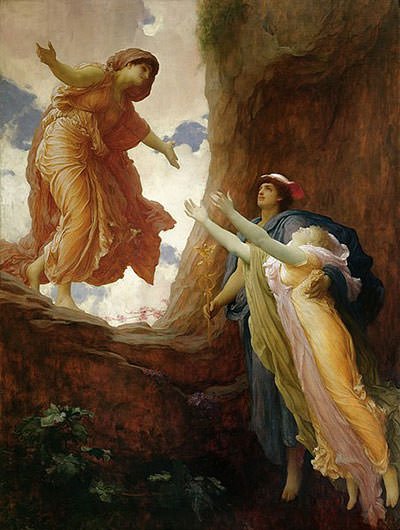
#5 Minthe And Leuke
Greek myths identify Minthe as an incredibly beautiful Naiad nymph who presided over the river Cocytus, among the 5 rivers that flowed through the Underworld (realm of Hades). According to one story Minthe and Hades were having an affair before the abduction of Persephone. After Persephone became the queen of the Underworld, the rejected Minthe in her jealousy proclaimed herself to be more noble and beautiful than Persephone. She further boasted that Hades would soon grow tired of Persephone and would return once again to her. The rash words angered Persephone who trampled on Minthe and transformed the later into the mint plant. In another variation of the story it was Demeter who transformed Minthe by trampling her. In another alternate version of the story a jealous Persephone transforms Minthe into the mint plant when she catches her trying to seduce her husband Hades.
Leuke (or Leuce) on the other hand was also a beautiful nymph and daughter of Okeanos (Oceanus). Hades fell in love with Leuke and abducted her to the Underworld. Here she lived out the full span of her life with Hades. After her death she was commemorated by Hades and transformed into a white poplar tree in the Elysian Fields, the place in the Underworld where the pious spend their afterlife.
#6 Hades And Sisyphus
Counted among the craftiest and most deceitful of men in Greek myths, Sisyphus was the founder and first king of Ephyra (estimated as Corinth). According to a mythical story Zeus once kidnapped Aegina, daughter of the river God Asopos, and Sisyphus who was aware of the abduction told Asopos where his daughter was. This infuriated Zeus who sent Hades (Thanatos in another variation) to chain Sisyphus and take the king to the Underworld. However the wily Sisyphus tricked Hades and the God mistakenly chained himself, resulting in a precarious situation where no one was able to die. The Gods of Olympus were further enraged at this insolence, and threatened to make life so miserable for Sisyphus that he would wish he were dead, forcing Sisyphus to finally let Hades go. Further on in his life Sisyphus cheated death yet again when he fooled Hades’s wife Persephone and returned back to the living from the Underworld. Sisyphus was eventually dragged back into the Underworld by Hermes (herald of the Gods) where Hades awaited him with a terrible punishment for cheating death. Sisyphus was thus condemned to endlessly roll a heavy boulder up a steep hill.

#7 Orpheus And Eurydice
In Greek mythology, Orpheus was a legendary poet, musician and prophet, who had the ability to charm anyone or anything his music. Once when Orpheus was engulfed in grief after the death of his beloved wife Eurydice, he decided on visiting the land of Hades and request the God to release his wife. Aided by his soulful music, Orpheus made the impossible journey to the Underworld and sought the attendance of Hades and Persephone. Upon hearing his story of love, Hades was reminded of his love for Persephone while the queen fondly remembered her mother Demeter with tears in her eyes. Finally moved my Orpheus’s love and devotion for Eurydice they granted him a privilege that no mortal had ever gained, allowing Eurydice to make the journey back into the land of the living. There was however only one condition, that on their way up neither Orpheus nor Eurydike should look back. Alas, Orpheus looked back and Eurydice was pulled back into the Underworld.
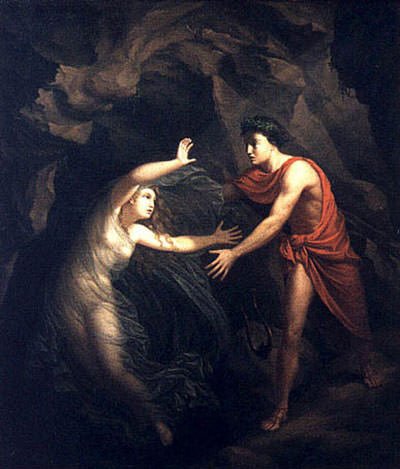
#8 Pirithous And Theseus
In Greek mythology, Pirithous was the king of the Lapiths in Thessaly and the son of the Goddess Dia from either Ixiom or Zeus. Pirithous met up with the famous Greek Hero Theseus and the two became the best of friends. Once after the death of their wives Theseus and Pirithous pledged to marry Zeus’s daughters. Theseus chose Helen of Sparta and Pirithous on the other hand decided on a more esteemed and dangerous prize, Persephone. When the two friends traveled to the Underworld they had an encounter with none other than Hades. The king of the Underworld pretended to offer them hospitality and set a feast for them, but as soon as the pair sat down, they were magically bound to their seats. Finally it was the hero Heracles (Hercules) who freed Theseus on his visit the Underworld. However, the former’s attempt to liberate Pirithous failed. He was thus cursed to remain in the Underworld for eternity. It is implied that Pirithous had committed too great a crime by desiring Persephone, queen of the Underworld and wife of one of the great Gods, Hades.
#9 Heracles And Cerberus
Among the most celebrated characters in Greek myths, Heracles (Hercules in Roman) was a Greek hero and demi-god who was the son of Zeus from the mortal Alcmene. During the course of his tragic life circumstances forced Heracles to serve his greatest enemy King Eurystheus, who sent him on 12 life threatening adventures. Heracles in his final 12th labor was given the impossible task of capturing the 3 headed dog Cerberus from the realm of Hades. With Athena’s help Heracles found an entrance to the underworld and eventually found Hades, king of the underworld. Instead of attempting to steal the monstrous dog, Hercules chose to ask Hades for permission to borrow it. Hades agreed on the condition that the hero should be able to capture and subdue the dog without the use of weapons and without injuring it. Hercules overpowered Cerberus with his bare hands and slung the beast over his back. He then carried it out and back to Eurystheus. Cerberus would eventually find his way back to his post after the 12th labor was completed, guarding the gates of the Underworld.
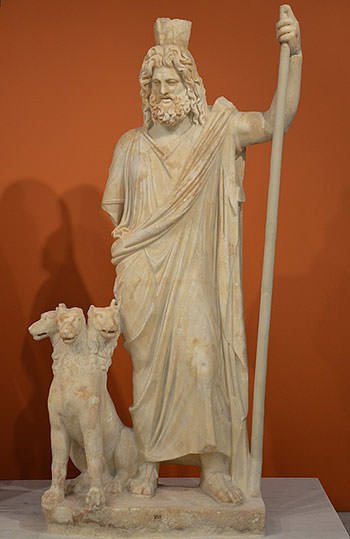
#10 Hades And The Siege of Pylos
According to Hormer in his Illiad, Hades was once wounded by an arrow from Heracles during the siege of Pylos. The gate-place of the setting sun, Pylos was among the rare cities in ancient Greece that were dedicated to the worship of Hades. When Pylos was attacked by the Greek hero Heracles, Hades found himself struck by an arrow while defending the city. The wound was deep on Hades’s heavy shoulder and caused him immense pain. Hades thus made his way to Mount Olympus where he was cured by Paieon (Paeon), the physician of the gods.

